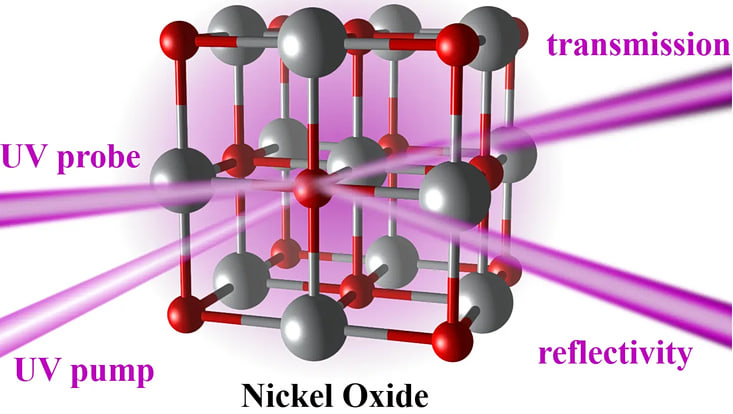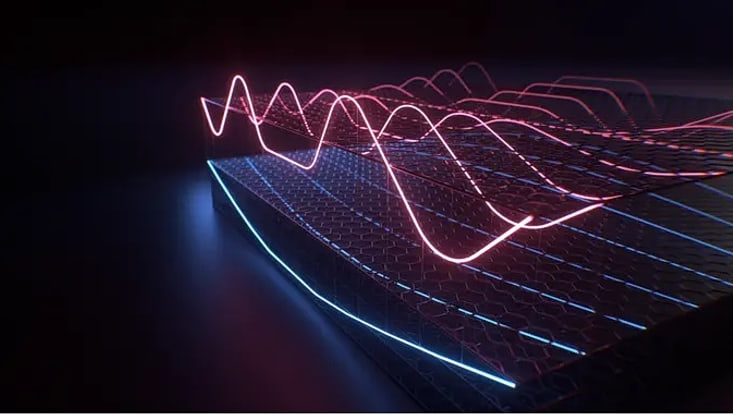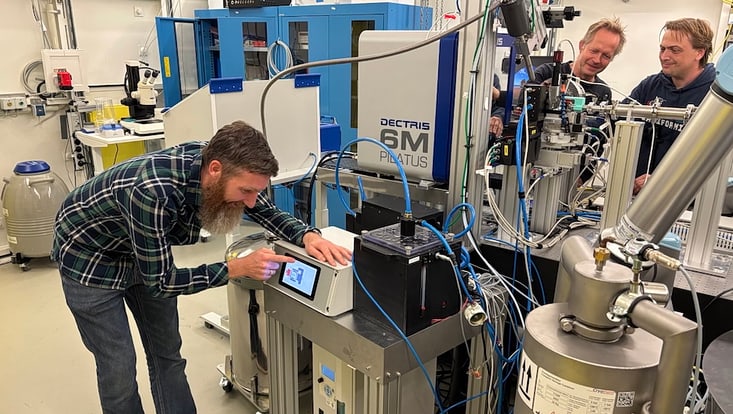Imaging of Matter
Shedding light on Insulators: How light pulses unfreeze Electrons
17 September 2025

Photo: T. Rossi /HZB
Metal oxides are abundant in nature and central to technologies such as photocatalysis and photovoltaics. Yet, many suffer from poor electrical conduction, caused by strong repulsion between electrons in neighboring metal atoms. Researchers of the Max Planck Institute for the Structure and Dynamics of Matter (MPSD), Helmholtz-Zentrum Berlin (HZB) and partner institutions have shown that light pulses can temporarily weaken these repulsive forces, lowering the energy required for electrons mobility, inducing a metal-like behavior. This discovery has been published in Science Advances.
In most metal oxides, electrons behave like cars stuck in traffic: strong repulsive forces prevent them from moving into neighboring sites already occupied by other electrons, effectively freezing them in place. Materials governed by these repulsions (or correlations) conduct electricity poorly and underperform in e.g. solar energy conversion.
For a brief moment, electrons move at a lower energy cost
Researchers from the MPSD, the HZB and partner institutions have now shown that ultrashort light pulses lasting just a few tenths of femtoseconds can temporarily weaken these repulsive forces. For a brief moment, electrons are able to move at a lower energy cost, causing the material to behave more like a metal. Unlike conventional methods that rely on temperature, pressure, or chemical changes to alter conduction, this approach uses light to achieve the same effect at ultrashort timescales.
The team focused on nickel oxide (NiO), a charge-transfer insulator with an electronic structure similar to high-temperature superconductors. In NiO, they achieved unprecedented control: the reduction in electron repulsion scales linearly with light intensity, persists for hundreds of picoseconds, and relaxes back to equilibrium at the same pace regardless of excitation density. Overall, these properties open up exciting new prospects for more efficient light-based devices and next-generation technologies combining wide dynamic ranges of operation with ultrafast switching speeds.
“Controlling electron-electron interaction using lasers in such short time scales is truly exciting and opens up many possibilities for future fundamental research and potential technological applications” says Nicolas Tancogne-Dejean, who performed the theoretical simulations for this work at the MPSD. MPSD Director Angel Rubio, who also conducts research in the Cluster of Excellence “CUI: Advanced Imaging of Matter,” was also involved. Text: HZB, MPSD, red.
Original Publication
Th. C. Rossi, N. Tancogne-Dejean, M. Oppermann, M. Porer, A. Magrez, R. V. Chopdekar, Y. Takamura, U. Staub, R. M. van der Veen, A. Rubio, und M. Chergui
Dynamic control of electron correlations in photodoped charge-transfer insulators
Science Advances 11, 36


